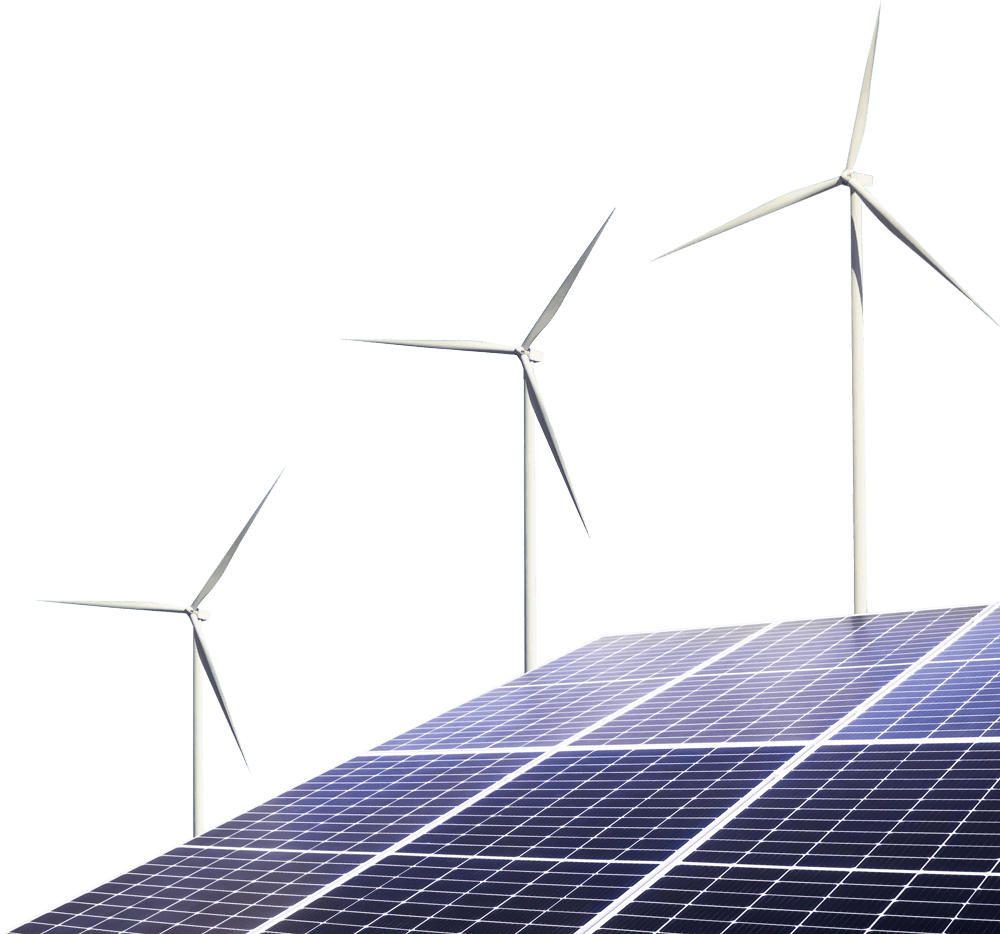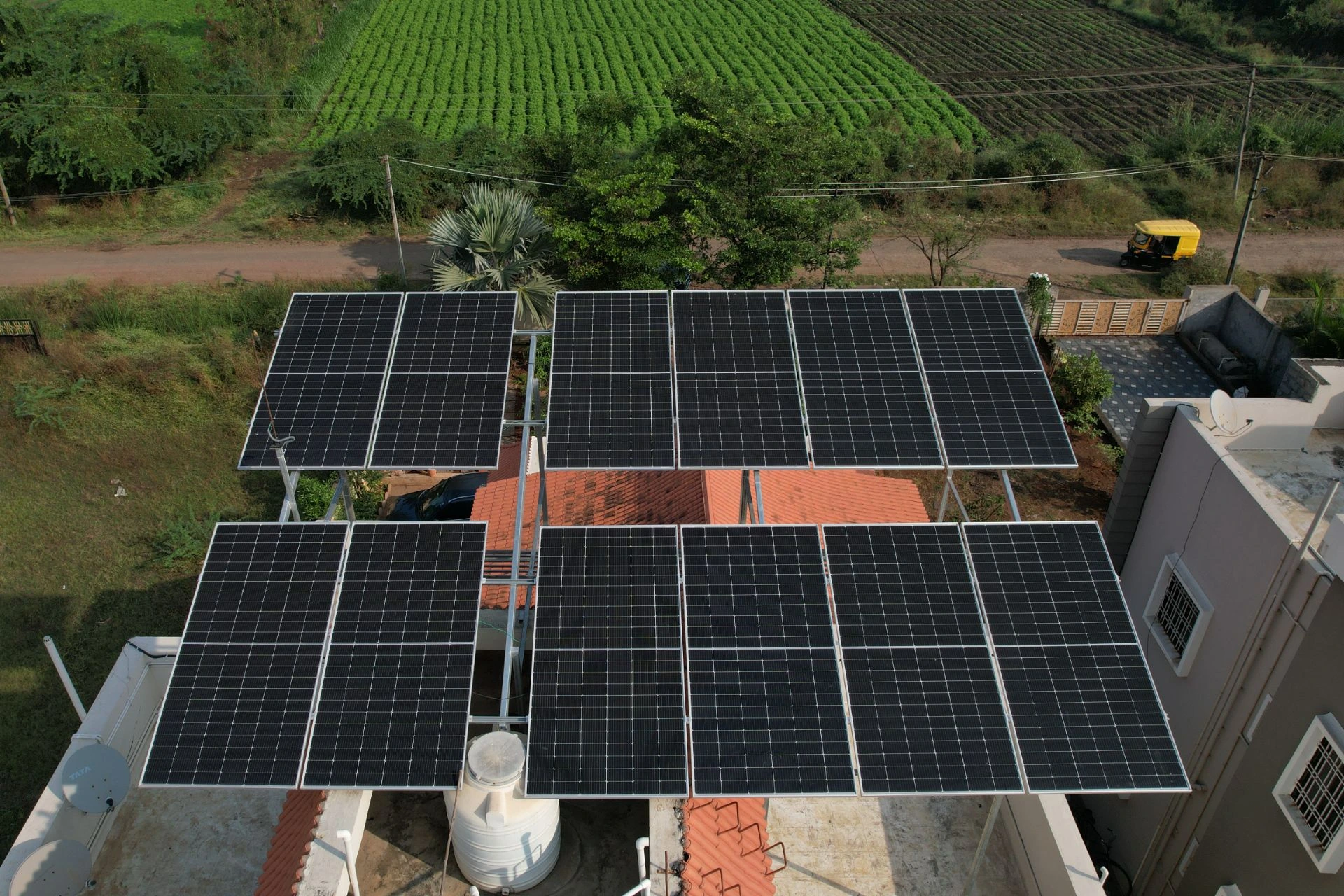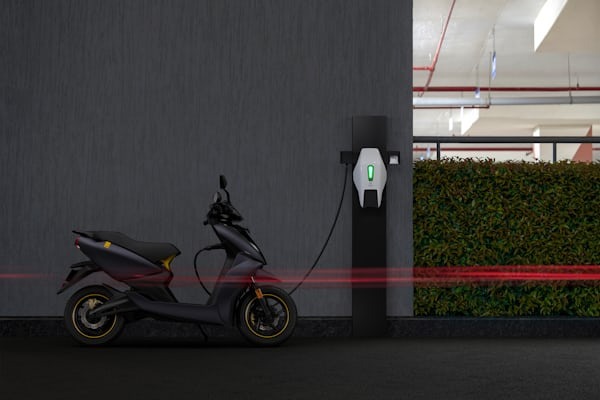Stop Paying Electricity Bills - Let Your Rooftop Generate Free Power
Join 500+ Happy Homes & Businesses in Maharashtra Who Slashed Their Bills by 90% with Our Expert Solar Solutions.
Projects Completed
PM Surya Ghar Clients
2Cr+ Happy Clients

- Green Energy Revolution
We are a leading solar and renewable energy company dedicated to delivering innovative, long-term & sustainable power solutions with perfect holistic system integration

High-Efficiency Rooftop Solutions
Custom-designed systems with complete subsidy support under the PM Surya Ghar Yojana. Reduce your electricity bills by up to 90% with our MNRE-approved installations.
Smart Solar-Powered Charging
Future-ready charging solutions for homes and businesses. Compatible with solar power for true zero-emission charging and lower costs.
Uninterrupted Power Backup
Reliable hybrid power systems designed for Maharashtra’s frequent outages. Enjoy intelligent switching between grid, solar, and battery power.
- Process
How does Powernext Work?
Consult & Design
We begin with a free site survey and energy analysis. Our team creates a custom 3D system design tailored to your roof and electricity needs.
Approve & Process
You receive a fixed-price proposal. We then handle all approvals, DISCOM paperwork, and your full PM Surya Ghar subsidy application.
Install & Connect
Our certified engineers install your system swiftly. We manage the entire setup, including net meter installation and final grid connection.
Activate & Maintain
We power on your system and provide a performance monitor. Enjoy ongoing support with our affordable maintenance plans (AMC).
- Client Feedbacks
What People Say About Us
Secretary, Green Valley Society
"Our Kolhapur showroom now runs on solar with EV charging stations. PowerNext's technical team delivered perfect integration - our electric fleet charges for free using solar surplus!"
CEO, Urban Motors
"As a housing society secretary, I was skeptical about solar. PowerNext's patient guidance and affordable AMC plan made our 100kW project hassle-free. The 40% subsidy claim was processed in just 3 weeks!"
Secretary, Green Valley Society
"Our Kolhapur showroom now runs on solar with EV charging stations. PowerNext's technical team delivered perfect integration - our electric fleet charges for free using solar surplus!"
CEO, Urban Motors
"From consultation to after-sales support, PowerNext exceeded expectations. Our Pune office solar system works flawlessly, and their app helps monitor real-time savings."
Operations Head, TechNova Solutions
Join 500+ Maharashtra Homes & Businesses in the Solar Revolution
- Our Projects
Showcase of Completed Projects
Powering sustainable transition—one rooftop at a time

Sangli Solar Rooftop
Installed a 25kW rooftop system for Sahyadri Hospital, reducing their grid dependency by 75%. and secured a 40% subsidy under PM Surya Ghar Yojana

Kolhapur EV Station
We deployed a 30kW solar-powered EV charging hub for Urban Motors, serving 15 EVs daily. which cuts charging costs by 90% using excess solar energy.

Sangli Society Solar
A 100kW solar plant for Green Valley Housing Society now powers 80 flats. Residents save ₹1.2L monthly with our optimized on-grid design.
Trusted Across Maharashtra






- FAQ
Most Common Questions
Get expert insights on the most common renewable energy queries.
What is PowerNext Energy?
PowerNext Energy designs, engineers, and installs comprehensive solar and energy optimization projects for utility, commercial, and industrial clients.
We provide perfect holistic power solutions through system integration, engineering, procurement, construction (IEPC), and O&M services, with a single goal in mind: innovative, long-term & sustainable power solutions.
Established in 2017 by founder Pranav Patwardhan, and strengthened by co-founders Pratish and Pooja Patwardhan, PowerNext Energy is a trusted solar partner in Maharashtra. We believe in leveraging engineering excellence to not only reduce electricity bills but also to build a sustainable and energy-independent future for our community.
What is a solar rooftop system?
A solar rooftop system is a combination of many components that convert sunlight into usable electricity.
The components of a rooftop solar include the following –
- Solar panels with PV cells
- Solar inverter
- Solar panel mounting structures
- AC and DC cables
- AC combiner box
- DC combiner box
- Earthing cables
- MC4 connectors
How does a solar rooftop system work?
A solar rooftop system works on the concept of conversion of sunlight into electricity. The phenomenon is known as the photovoltaic effect.
When sunlight falls on the PV cells in a solar panel, the sunlight is converted into electricity. The generated power is DC current. An AC combiner box is used to convert that DC power into usable AC power.
The generated AC electricity is fed into a bidirectional meter that supplies power to the house. It also exports excess power to the DISCOM (grid) and imports power from the grid if electricity generated by the rooftop solar system is not enough to cover the daily requirement.
How to apply for a solar rooftop subsidy?
Under the DBT scheme, the subsidy application process has become much easier. Here’s a step-by-step breakdown:
- Visit the National Portal for Rooftop Solar website.
- Download the Sandes app from the website and install it.
- Register as a customer on the Sandes app.
- Once registered, a discom official will visit your home to assess technical feasibility.
- After receiving the No Objection Certificate (NOC) from the official, choose SolarSquare as your solar installation company.
- Discuss the project details with us and sign an agreement.
- Upon receiving payment, we will commence the installation process.
- We will then provide a work completion report and apply for a net meter installation on your behalf.
- You will receive a commissioning certificate upon completion.
- Submit your bank account information and upload a copy of a cancelled cheque through the National Portal for Rooftop Solar.
- Once the fund handling agency receives your details, the subsidy will be credited to your bank account within 30 days.
By following these steps, you can smoothly complete the process and enjoy the benefits of solar energy.
Why should I go solar?
If you want to save money from the sun, Solar is the best investment for you. Solar allows you to save on your monthly electric bills plus it also allows you to save the planet by going green. Solar energy is a true form of renewable clean energy which leads to zero pollution (air, noise, land) and emits no greenhouse gases mitigating climate change.
What is the price of a solar system in India without a subsidy?
If you are planning to install solar for home or housing societies, the solar panel for home price list we’ve curated will greatly help you. Here’s the reference about the range of solar panels for home cost without a subsidy in India:
- 2 kW rooftop solar system: ₹1,51,000 to ₹2,28,000
- 4 kW rooftop solar system: ₹2,40,000 to ₹3,19,000
- 7 kW rooftop solar system: ₹4,21,000 to ₹5,39,000
- 3 kW rooftop solar system: ₹1,92,000 to ₹2,63,000
- 5 kW rooftop solar system: ₹2,87,000 to ₹4,14,000
- 10 kW rooftop solar system: ₹5,59,000 to ₹7,08,000
Is solar power safe?
Yes. The electricity produced by a solar power system is no different than the electricity you get from your electricity distribution company. The only difference is the source. Moreover, it is among the safest source of electricity consumption because it is neither hazardous nor does it release any toxic or harmful gases during production.
What do I need to install a rooftop solar system?
All you need to qualify for a solar system is – empty space on your roof and access to your rooftop. Just fill the project enquiry form on our website and our team will contact you to discuss your requirement. Once the project is finalised, we will take care of your entire plant design, installation and maintenance.
What are the different types of Solar systems?
There are 3 types of Solar systems depending on whether the plant is linked to the power grid or battery systems for storage.
- On-grid solar systems use common solar inverters and are connected to the public electricity grid. Any excess solar power that you generate is exported to the electricity grid and one usually get paid a feed-in-tariff or credits for the energy you export. The policy for getting credits for energy exported to the credit is termed as “Net-Metering Policy” and is available currently in most states of India.
- Off-grid solar systems are not connected to the electricity grid and therefore requires battery storage. An off-grid solar system must be designed appropriately so that it will generate enough power throughout the year and have enough battery capacity to meet the home’s requirements, even in the depths of winter when there is less sunlight.
- Hybrid solar systems combines solar and battery storage in one and are now available in many different forms and configurations. This means being able to store solar energy that is generated during the day and using it at night. When the stored energy is depleted, the grid is there as backup, allowing consumers to have the best of both worlds.
Do solar panels generate electricity even during monsoon and winter?
Yes, Solar panels do produce electricity in cloudy or rainy weather albeit with reduced efficiency. This fall in production is considered in the unit generation estimates provided for every project.
Does a rooftop solar PV generate power during a power failure?
No, rooftop solar PV does not function or generate electricity during a blackout due to safety reasons. Since blackouts occur when the electricity grid is damaged. If a solar inverter was still feeding electricity into a damaged grid it would risk the safety of the people repairing the fault in the network. Powernext Energy provides the option of using a Li-ion storage battery with Solar power plants for areas which suffer from frequent power failures. This battery unit can store the excess electricity produced during the day and acts as a backup for any electricity requirement during night or in the event of a power failure.
How much electricity does a solar plant produce?
The production level of a solar plant depends on multiple factors like radiation levels, amount of sunlight received, plant design and quality of components. On an average, 1 kW solar plant produces 4 units of electricity per day.
What kind of appliances can I use on Solar Power?
Solar Power plants are used to power all types of heavy machinery in industrial plants as well as household electrical and electronic appliances. Since the electricity produced from the plant is fed in sync with your grid/diesel generator, there are no voltage fluctuations irrespective of the number of appliances you use.
How do I decide what size of plant I need?
The size of your Solar plant depends on the following factors
- Your electricity consumption pattern
- Available shadow free area
- Solar irradiation in your area
Once you enlist your interest in a solar project, Powernext conducts a scientific mapping of the appropriate project size for you.
What is Net metering?
Net Metering is a system that gives solar energy owners credits for the power that they add to the grid. When solar panels produce excess power, that power is sent to the grid. And this power can be ‘taken back’ when the solar plants are not functioning – example, during the night. When a unit of solar energy that has been ‘net metered’, the bi-directional electricity meter will run backwards. Customers are billed only for the ‘net’ energy use.
What is the life of a rooftop solar system?
Do Solar Rooftop projects have a high maintenance cost?
Can Solar projects damage my roof?
Do I need to clean my Solar plant?
It is a good practice to clean the solar panels 1-2 times a month. It is safer to clean the panels early in the morning or at night when no incident sun rays are present and the power plant is not producing any electricity. You can simply use a clean wet cloth, soft nylon brush or sponge to wipe the surface but ensure the panels are clear of any moisture. Don’t use metal brushes or detergents as these may streak the glass of the panel.
My roof is not made of concrete; can I still install a Solar Project?
Solar power plants can be installed on almost any type of roofs irrespective of their shape or material type. In cases where the construction material is brittle (Asbestos) or the roof integrity is compromised, Powernext Energy provides roof replacement solutions as part of the solar rooftop project.
How much does a solar Plant cost?
The cost of a solar plant depends on its size, configuration and degree of supporting structures required. We provide you multiple options to choose from, designed specifically to meet your requirements.
What is the break-even period for Solar rooftop projects?
Rooftop solar projects are among the most lucrative investments for industrial, commercial and residential projects. The breakeven is achieved in 2-4 years itself, while you enjoy savings for the project life of 25 years.
Are there any subsidies provided by the government for solar projects?
There are no subsidies available for commercial entities. For residential rooftop solar projects, subsidies are released by the government within 30 days. Whenever a subsidy is applicable, Powernext assists you throughout the entire process—from application to disbursement—ensuring you receive the subsidy amount.
At present, the state government provides an additional solar subsidy of ₹15,000 per kw (max ₹30,000) when you install a rooftop solar system, bringing the total maximum subsidy amount to ₹1,08,000.
How do I avail subsidy provided by the Maharashtra government?
Powernext Energy provides the subsidy upfront as a direct discount to the consumers to ensure a hassle free experience.
What is the difference between CapEx and OPEX models?
Powernext Energy provides lucrative EMI options while also facilitating collateral free loan facilities provided by various banking institutions for solar projects.
Annual cleaning and inspection ensure peak performance. Our ₹2,999 AMC covers everything – from monsoon checks to inverter servicing.
90% of Maharashtra roofs qualify! Book a free site survey – we assess shadow, orientation, and structural safety in 30 minutes.
Just 48 hours post-subsidy approval for homes. Commercial projects (50kW+) take 5-7 days with our rapid-response teams.
Easily! We design modular systems – add panels anytime. Existing users get 15% discount on expansions.
Yes! Our solar-integrated chargers with battery backup ensure uninterrupted charging.


"As a housing society secretary, I was skeptical about solar. PowerNext's patient guidance and affordable AMC plan made our 100kW project hassle-free. The 40% subsidy claim was processed in just 3 weeks!"